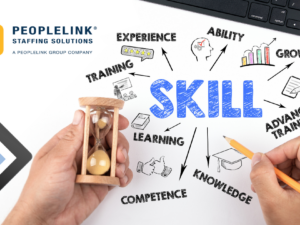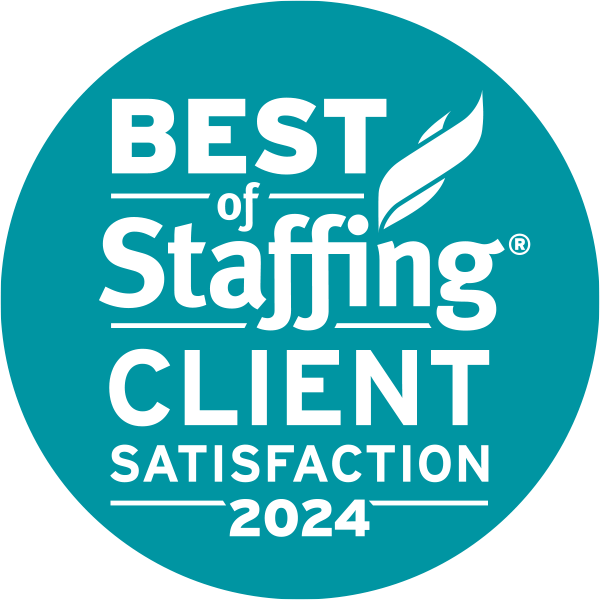
The next generation of manufacturing and light industrial talent is clocking in with PPE and digital fluency. As seasoned employees retire, companies must attract Gen Z (born 1997–2012) to step into these critical roles.
Many employers still view Gen Z through stereotypes—seeing them as glued to screens, restless, or demanding. Yet when engaged thoughtfully, they bring innovation, energy, and long-term stability. Their expectations aren’t unusual; they simply see work through a fresh lens and aren’t afraid to question the status quo.
A New Generation Steps Forward
Gen Z is the fastest-growing segment of the labor force. By 2030, they’ll make up nearly one-third of all U.S. workers. Many in Gen Z are open to skill-based careers or training programs that offer a clear return on investment but only when they see clear opportunity and modern workplaces behind them. The manufacturing sector, once seen as outdated, has a chance to evolve to meet those expectations.
To recruit and retain this talent, employers must understand their outlook and modernize workplace practices to meet it.
Complementary Strengths Across Generations
Millennials and older workers bridged the gap between manual processes and early automation, bringing valuable insight into the “why” behind production systems. Gen Z, by contrast, has never known a world without smartphones or instant access to data. They expect systems to be efficient, intuitive, and responsive.
Together, these strengths complement each other: experienced employees ground the process, while Gen Z’s digital fluency drives modernization. When both are present, operations become more agile and better equipped for change. Recognizing what Gen Z values, clarity, feedback, growth, and balance, helps employers bring out the best in both generations.
Moving Past Myths
A common misconception is that Gen Z expects to earn “too much.” But that often reflects rising living costs, not unrealistic ambition. Another myth is that they avoid hands-on jobs, but many are drawn to roles that merge technology and tangible outcomes, such as robotics, quality inspection, and production analytics. Some assume they lack discipline or crave constant flexibility, yet Gen Z values structure, clear expectations, and recognition for effort. And while they may be less experienced, they’re fast learners whose digital skills can streamline production and reporting.
Dispelling these assumptions shifts the conversation from skepticism to strategy. When employers make the effort to understand Gen Z, they often discover a workforce that’s eager, capable, and deeply invested in doing great work.
Why Scheduling Matters More Than Ever
When it comes to attracting Gen Z talent, few factors speak louder than how a facility handles scheduling. Manufacturing Dive recently pointed out that outdated scheduling practices are a leading factor in frontline turnover. Rigid or last-minute schedules don’t just cause inconvenience, they send a message about how much a company values its people.
For Gen Z, scheduling signals respect and modernization. They notice inconsistency quickly and respond positively to transparent, tech-enabled systems. Three practices make the biggest difference:
- Predictability: Post schedules well in advance to give workers stability.
- Flexibility structure: Allow shift swaps or compressed workweeks to support work-life balance.
- Digital access: Make schedules viewable in real time through mobile apps or dashboards.
Smarter scheduling doesn’t just appeal to Gen Z, it improves retention and morale across the board, reducing burnout and turnover costs.
How Employers Can Connect with Gen Z Talent
Successfully recruiting Gen Z means showing that your workplace aligns with their goals. Key strategies include:
- Modernize recruiting experiences. Use mobile-friendly applications and share authentic employee stories. Gen Z researches employers online and values transparency—what current workers say carries more weight than a job post.
- Clarify growth opportunities. Make career paths visible from day one. Whether through cross-training, certifications, or advancement, show that entry-level work leads somewhere meaningful.
- Promote mentorship and reverse mentorship. Pair experienced employees with younger hires for knowledge transfer both ways. Gen Z gains practical insight, while seasoned staff learn new tools and fresh approaches.
- Communicate with purpose. Frequent, constructive feedback helps Gen Z understand their progress and stay engaged.
- Showcase your values. Whether your focus is sustainability, safety, or community, make it visible. Purpose strongly influences where Gen Z chooses to work and stay.
- Treat scheduling as a culture lever. Tech-enabled scheduling signals that your company values time, balance, and respect. These priorities resonate with all generations, but especially Gen Z.
The Strategic Case for Acting Now
The manufacturing and light industrial sectors are entering a defining moment. Automation and reshoring are creating new jobs just as the most experienced generation exits the workforce. The U.S. manufacturing sector alone is expected to add 3.8 million new jobs between 2024 and 2033, driven largely by advances in AI and automation.
Many of these roles, such as robotics technicians, collaborative robot engineers, and smart factory managers, blend technology and production in ways that align perfectly with Gen Z’s skills and interests. Companies that can attract and develop digitally minded talent will hold a lasting competitive edge.
By focusing on Gen Z recruitment today, employers gain a head start on building tomorrow’s workforce—one that’s innovative, adaptable, and ready for the future.
Building the Future, Together
Gen Z is helping define what comes next. Their energy and digital fluency meet the wisdom and craftsmanship of those who’ve spent decades building these industries. And as the next generation begins to take shape behind them, each will inherit a workplace that’s a little more modern, inclusive, and ready for what’s ahead. The strongest companies will be those that make space for every generation to learn, lead, and grow together.
Ready to build a workforce that keeps pace with technology and talent trends? Let’s start the conversation today. We can help you assess your current workforce strategy and attract the next generation of skilled industrial talent.





